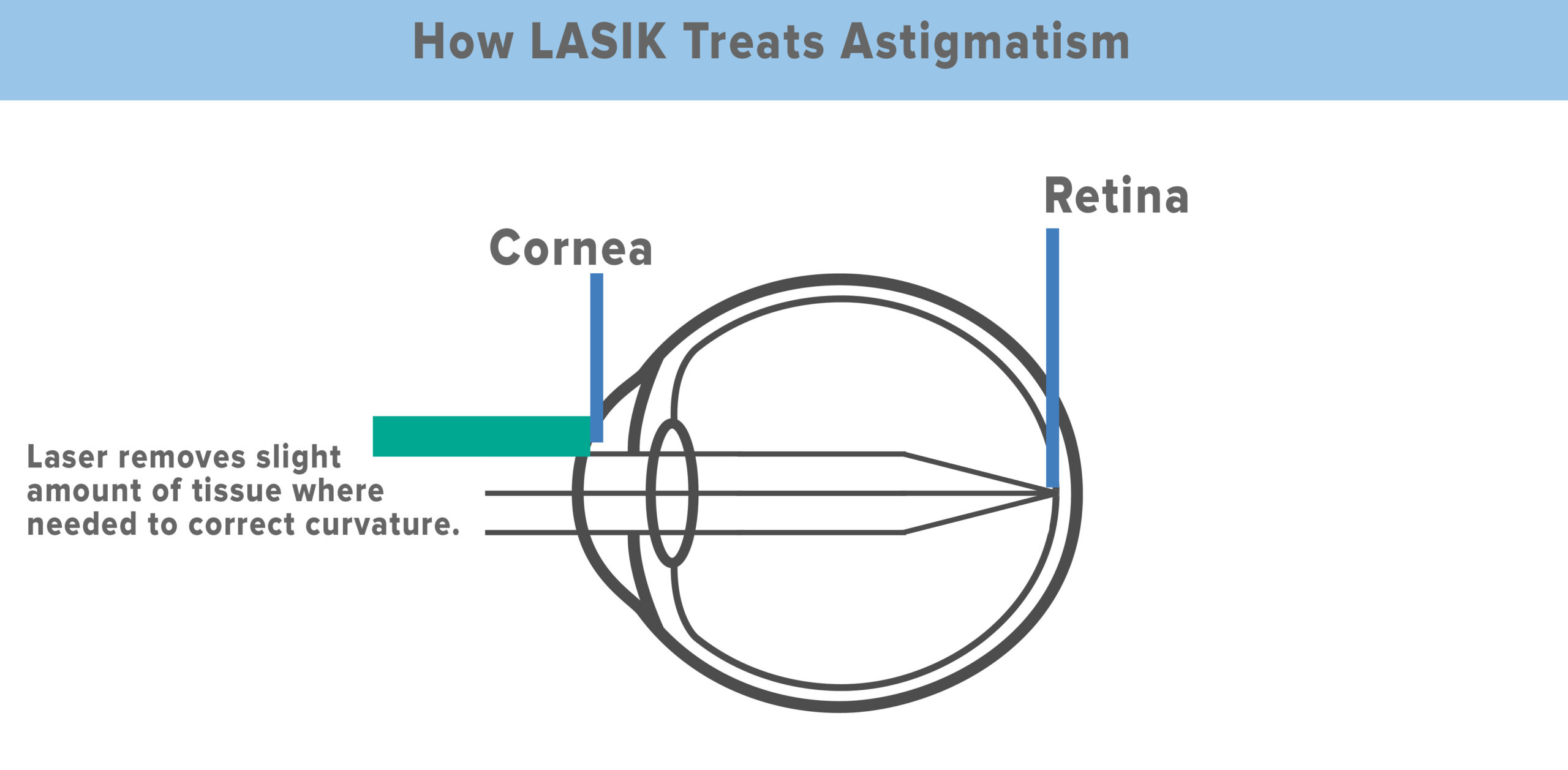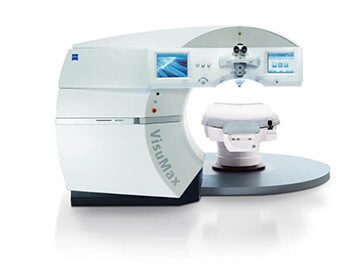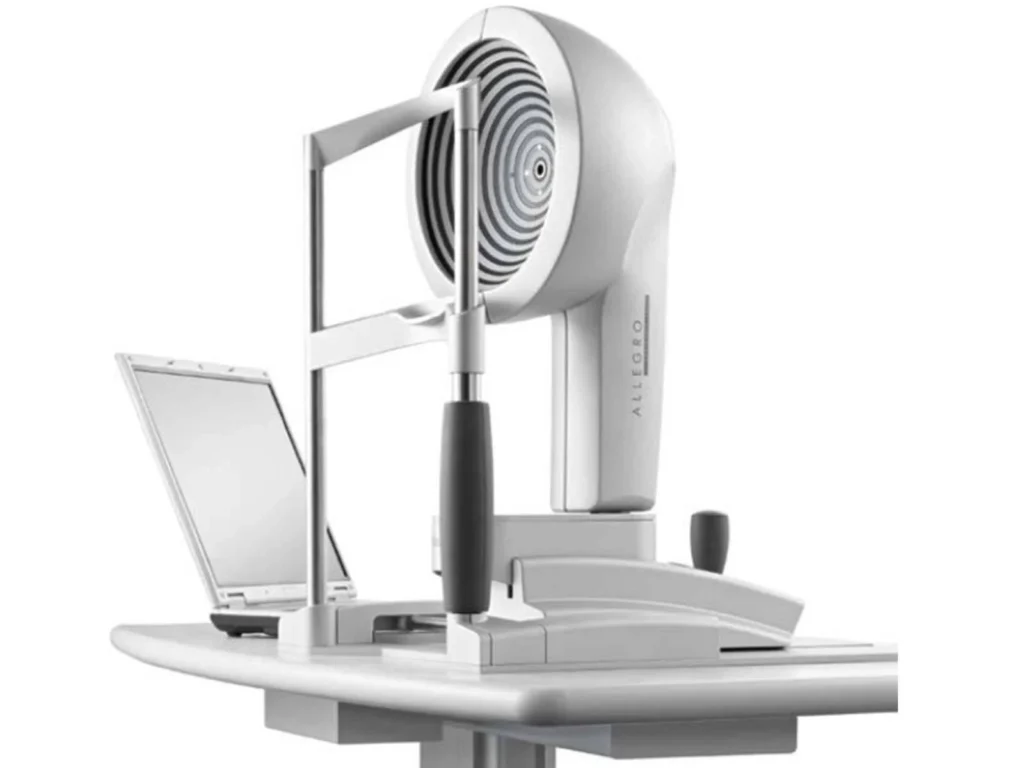LASIK Las Vegas
Get crisp, clear vision with LASIK Eye Surgery in Las Vegas.
Welcome to Las Vegas Eye Institute, where we combine cutting-edge technology with personalized care to offer you the best in LASIK eye surgery. Our dedicated team, led by the experienced Dr. Matthew Swanic, ensures that every step of your LASIK journey is informed, comfortable, and tailored to your unique needs. Come see us for LASIK in Las Vegas.

—Nick B.
Why Choose Us for LASIK in Las Vegas?
Get life-transforming laser eye surgery from Dr. Matthew Swanic, an expert in laser vision correction with a down-to-earth, calming demeanor his patients love.
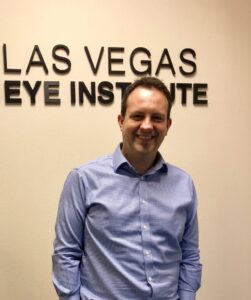
Benefits of LASIK
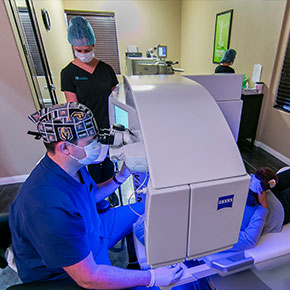
Take the next step.
Schedule your complimentary LASIK consultation today.
What is LASIK?
LASIK is a form of laser vision correction surgery that uses an excimer laser to ablate (remove) corneal tissue in a fashion that can correct nearsightedness, farsightedness, and astigmatism.
Step One: Create the Flap
LASIK Eye Surgery specifically involves the making of a flap on the surface of the cornea that can be lifted prior to the laser ablation. This flap is made with a femtosecond laser. This allows Dr. Swanic to access your cornea.
Step Two: Reshape the Cornea
After the flap is created, an excimer laser is used to remove slight amounts of tissue to reshape your cornea. This is called ablation. Where this tissue is removed depends on what kind of vision problem you have.
Nearsightedness
If you are nearsighted (myopia), you cannot see distant objects because your cornea is too curved. LASIK removes a slight amount of central cornea tissue to flatten your curve to correct your vision.
Farsightedness
If you are farsighted (hyperopia), you have trouble seeing near objects. This is because your cornea is too flat. LASIK increases the curve of your cornea by removing tissue from the outer edges of your cornea.
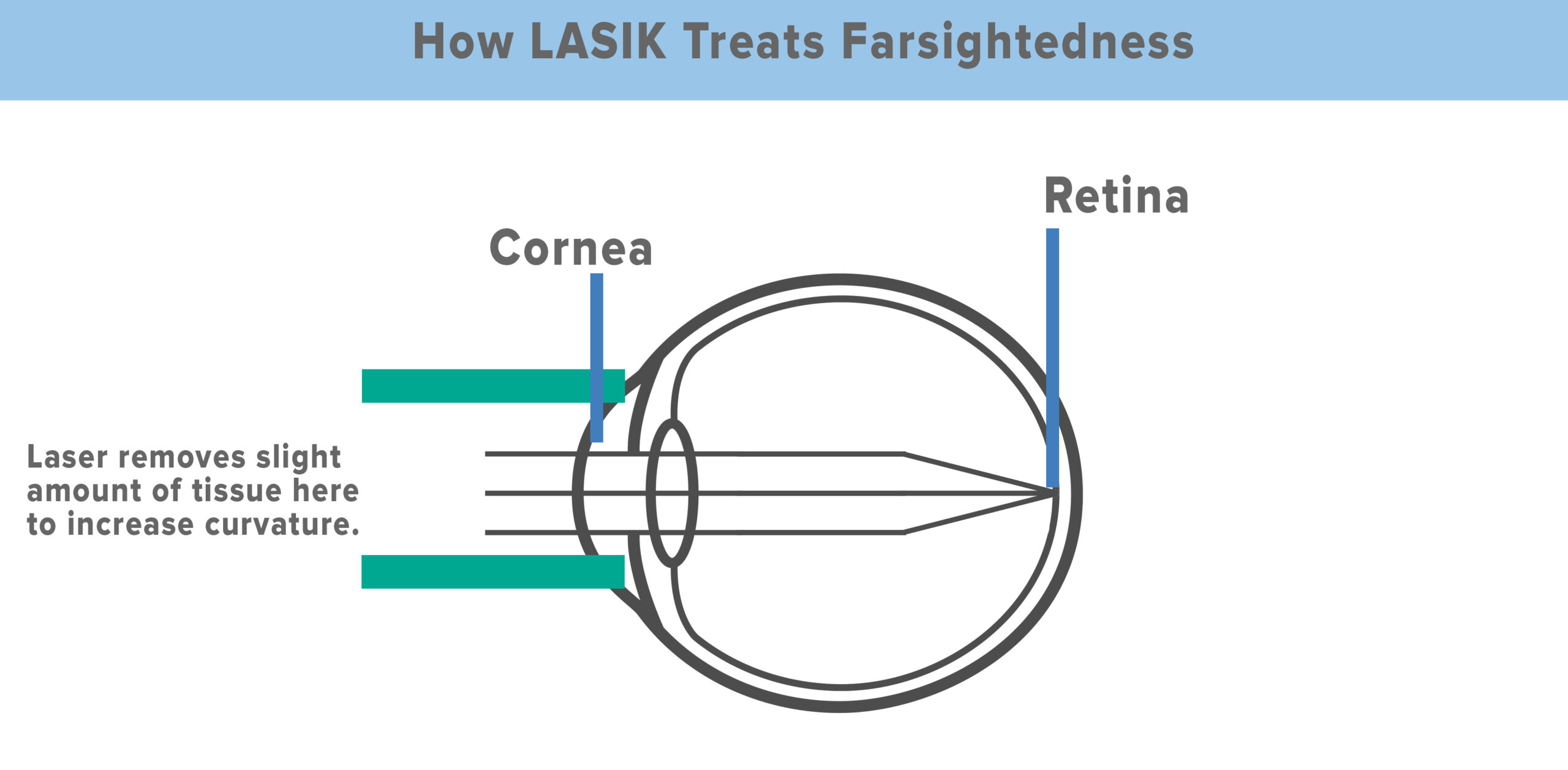
Astigmatism
If you have an astigmatism, your cornea is shaped more like a football than a round ball. LASIK corrects astigmatism by removing corneal tissue where the abnormal part of the curve is.
The Las Vegas Eye Institute's Patient Experience
Our Technology: LVEI's Advanced LASIK Suite
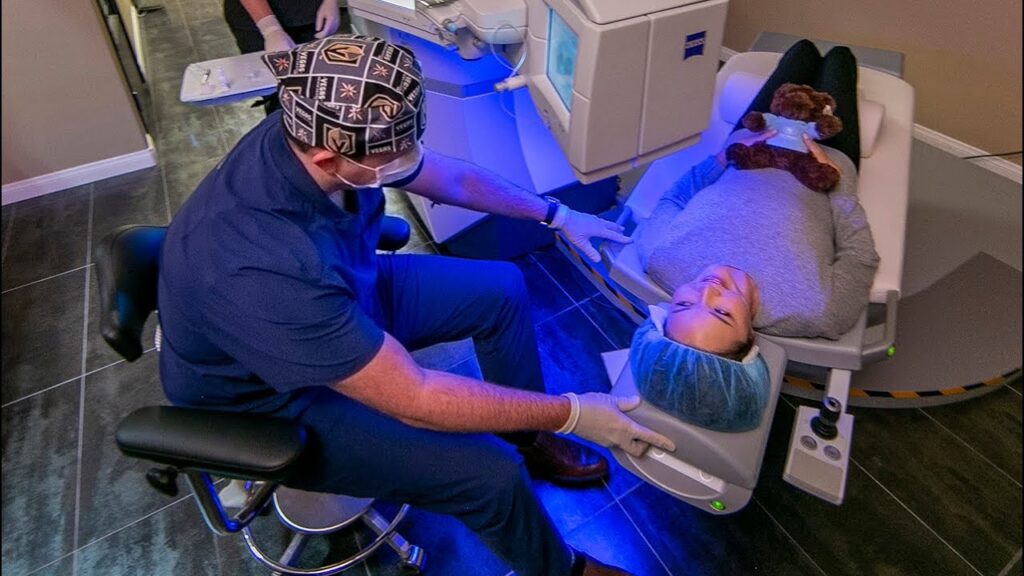
The Zeiss Visumax Platform Create the LASIK Flap
At Las Vegas Eye Institute, we are proud to be the only practice in Las Vegas that utilizes the Zeiss Visumax platform to create our LASIK flaps. The Zeiss Visumax utilizes a laser that fires 500,000 very low energy pulses per second to safely create a precise flap with an incredibly smooth bed on which to begin your customized excimer laser ablation.
The main advantage that patients love about the Visumax laser compared to its competitors is that the vision does not black out during flap creation. Patients simply look at a green flashing dot while the laser works its magic. In under 20 seconds, the flap creation procedure is complete. An added benefit of Visumax is the low suction it utilizes which allows most patients to avoid getting hemorrhages to the whites of the eyes that are commonly seen using other platforms.
The Alcon Wavelight EX500 Excimer with Contoura
Dr. Swanic is a certified specialist in the Alcon Wavelight Contoura and J&J Visx laser platforms at the Las Vegas Eye Institute. He upgraded to the Alcon Contoura Platform in our advanced LASIK suite in 2022.
At LVEI, we use the Contoura with iris registration platform, a special tool that helps us tailor LASIK surgery specifically for your eyes.
Think of it like a highly advanced camera mapping system that takes detailed pictures of your eye’s shape (cornea) and pupil. Using this information, we create a custom plan for your eye surgery.
The Alcon EX500 with Contoura is much more advanced than previous systems. It collects 22,000 unique elevation points on each eye.
One of the big pluses of the Ex500 with Contoura is that it’s highly effective at correcting astigmatism, helping a wider range of people who need LASIK. This unique map of your eye is used in the LASIK surgery suite to make sure the laser treatment is applied exactly where it’s needed.
We are excited to be one of only a few practices in Las Vegas to offer this advanced Contoura technology and we are the only practice in Las Vegas to use the Advanced Visumax laser for flap creation and SMILE.

Who is a Candidate for LASIK?
Lots of people are! You will find during your laser vision evaluation at Las Vegas Eye Institute that it seems as though your eyes are undergoing countless tests collecting thousands of data points (hint: because we are). This testing is being performed not only to get you the best possible results but also to ensure that we select the best laser vision correction for you.
If abnormalities are uncovered that make you not the “ideal” LASIK candidate then Dr. Swanic will discuss your alternatives. Many patients will prove to be excellent candidates for an advanced surface ablation technique known as PRK or LASEK (Laser Assisted Sub Epithelial Keratomileusis). These techniques are both quite similar. They do not involve the creation of a flap into the cornea. Both procedures are offered at our LASIK eye center.
Do not hesitate to discuss the subtle differences between these procedures. Dr. Swanic had PRK performed on his own eyes and is a strong believer in LASIK, PRK, and LASEK for appropriate candidates.
Take the Self-Test
See if you are candidate for laser vision correction.
Is LASIK Affordable?
LASIK is very affordable. What most people are asking is, “Is LASIK worth it?” Yes, especially when you consider the ongoing cost of renting your vision by constantly purchasing contact lenses or upgrading your eyeglasses prescriptions. With LASIK, you own your vision because the results are permanent.
We’ve written an entire article on The Cost of LASIK so you can get more details. We also offer convenient financing that makes LASIK as low as $150 per month. Our team can help you through the process.
Pre-Procedure Care
Our patients always remark about our friendly staff and Dr. Swanic’s calm demeanor. We know you are nervous about your LASIK procedure and we are here to guide and help you. Our team provides detailed instructions on how to prepare for the surgery and what to expect during the surgery, ensuring a smooth and comfortable experience.
Post-Procedure Care and LASIK Recovery
After undergoing LASIK surgery, it’s common to experience some eye irritation or watering for a few hours. Blurry vision immediately after the procedure is also normal and generally starts to improve within a day or two. Most patients find relief and comfort by taking a short nap while wearing protective eye shields to prevent any unintentional rubbing of their eyes.
We will see you for a follow-up appointment one day after your procedure to ensure everything is healing well. Then we will schedule appointments at 1 week and 1 month just to make sure your vision is clear and that you are enjoying your new vision. You are then typically seen 2 more times throughout the year to ensure that your results are stable.
Experience the LVEI Difference.
Experience friendly, unrushed, personalized treatment from Dr. Matthew Swanic.
FAQs About Lasik in Las Vegas
Does LASIK hurt?
LASIK doesn’t hurt. Numbing eye drops are used. All you will feel is soft pressure during the procedure. Some patients experience mild discomfort for a few hours after their procedure, but LASIK is not painful. Dr. Swanic will provide clear guidance, prescription eye drops, and artificial tears to reduce dry eye and make you comfortable during your short recovery time.
What is Custom LASIK?
Custom LASIK is when the reshaping laser, aka “the excimer,” utilizes data that is custom to your eye to plan its reshaping. When a procedure is not custom, it is simply based on what we call refraction. A refraction is a procedure that your optometrist performs where they keep asking you “which is better 1 or 2?” At Las Vegas Eye Institute, we routinely do custom LASIK and charge absolutely nothing extra for it.
We use the advanced Alcon Topolyzer topographer to measure the details of your corneal shape and to provide iris registration and precise treatment centration.
How do I find the best LASIK surgeon in Las Vegas?
We recommend that when you are looking for a LASIK surgeon you look for a surgeon who has completed a cornea and refractive fellowship after their residency. Why? The reason is that fellowship programs such as the UCLA Jules Stein Eye Institute fellowship that Dr. Swanic completed give your surgeon exposure to the best technology and in-depth one-on-one training with an experienced refractive surgeon. This isn’t a weekend course or a quick dinner instruction; this is one full year of rigorous training in advanced corneal analysis and hands-on refractive surgery.
We also know your LASIK surgeon’s bedside manner is vital. We get it. Patients get nervous about vision correction surgery. It’s expected. Dr. Swanic is best known for his calming, caring demeanor. Almost every review we get mentions it. At Las Vegas Eye Institute, you’ll have more personalized care and less apprehension than you will at many LASIK practices, where you feel like you are just another person on their LASIK conveyor belt. We invite you to come and experience the LVEI difference with a physician who will get to know you and answer your questions and concerns.


